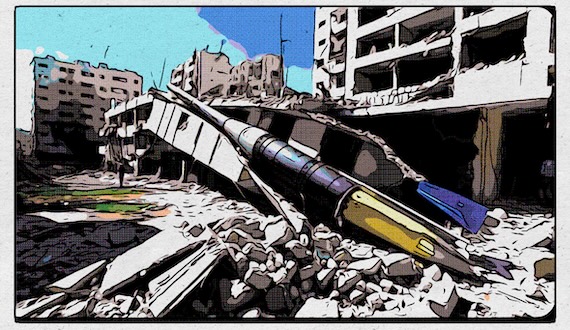Juan Cole
Ann Arbor
(Informed Comment) – The Israeli systemic destruction of civilian building
infrastructure in Gaza generated over 50 million tons of debris by 1 December
2024.

Clearing this
rubble will be extremely dangerous for the following reasons.
Since returning
to Gaza in November 2023, explosive ordnance disposal (EOD) teams of the UN
Mine Action Service have encountered more than 460 hazardous munitions visible
on the ground in the regions they were able to reach.
[Explosive
Ordnance Disposal (EOD) teams have come across aerial bombs, mortars, rockets,
grenades, and improvised explosive devices, MK 82, MK 83, and MK 84 aircraft
bombs weighing between 500 and one ton -— have frequently been observed on the
surface of Gaza and along roadways. Likely these munitions will also be
discovered as deeply buried explosives within structures and debris.]
As of January
21, 2025, a total of 92 casualties, encompassing both injuries and deaths, have
already been recorded in the UN Mine Action Service Public Information
Management System.
UNMAS notes that
with the enforcement of the ceasefire prompting more individuals to move
throughout Gaza and return to their residences, the risk of incidents rises as
people enter unverified and possibly hazardous locations.
A snapshot of
some 46 makeshift refugee camps as reported by aid organizations this week,
including RC, UNRWA, ACTED, PARC/DRC, PHC, where 55,725 individuals huddle in
the cold and rain without proper shelter.
Of the 46 sites,
only 2 had received any humanitarian aid in the past 7 days. That is, 44 sites
had received zilch, nada, zero, even basic things like food. Zero.
Only 2 of the
sites had seen a bit of aid, limited to some food. So you’re talking about over
50,000 people — children, women and men, who have not been helped by the
revived shipments of aid into the strip.
Yet 91% of the
camps had reported a desperate need for food.
In the area of
water, sanitation and hygiene (WASH) 76% said they need drinking water, 50%
said they need water for washing, and 28% said they needed hygiene kits. 50%
need blankets, and 30% need clothing.
A third don’t
even have adequate clothing. Half don’t have enough blankets to fend off the
winter cold.
About half of
the internally displaced refugees living in these makeshift camps plan to leave
soon.
About a quarter
say they will stay where they are, which sounds pretty desperate. They clearly
have no place to go back to.
Of the over
27,000 people planning on moving soon from this set of 46 camps, their
destinations are as follows:
North Gaza 39%
Gaza 30%
Rafah 28%
Khan Younis 26%
Already, 376,000
internally displaced refugees are thought to have gone home to their places of
origin in northern Gaza.
The Israeli
campaign of deliberate destruction of domiciles has ensured, of course, that no
habitable home awaits them, but maybe the rubble of your former home is better
than some makeshift camp elsewhere in the country.
In the first two
days of the ceasefire, a field assessment conducted by the Palestine Water
Authority (PWA) revealed significant damage to Water, Sanitation, and Hygiene
(WASH) facilities in North Gaza, affecting up to 70 percent of the
infrastructure and reducing water availability to just three liters per person
per day. The UN says that an average person needs 50 – 100 liters per day of
water for drinking, washing, etc.
In Gaza City,
the PWA reported extensive destruction -— exceeding 90 percent — of the
seawater desalination plant, the only facility of its kind north of Wadi Gaza,
which previously supplied water to the city’s northern and western
neighborhoods. The destruction of this plant has created a severe shortage in
water supply, with restoration expected to take approximately a year and cost
an estimated US$5 million.

No comments:
Post a Comment